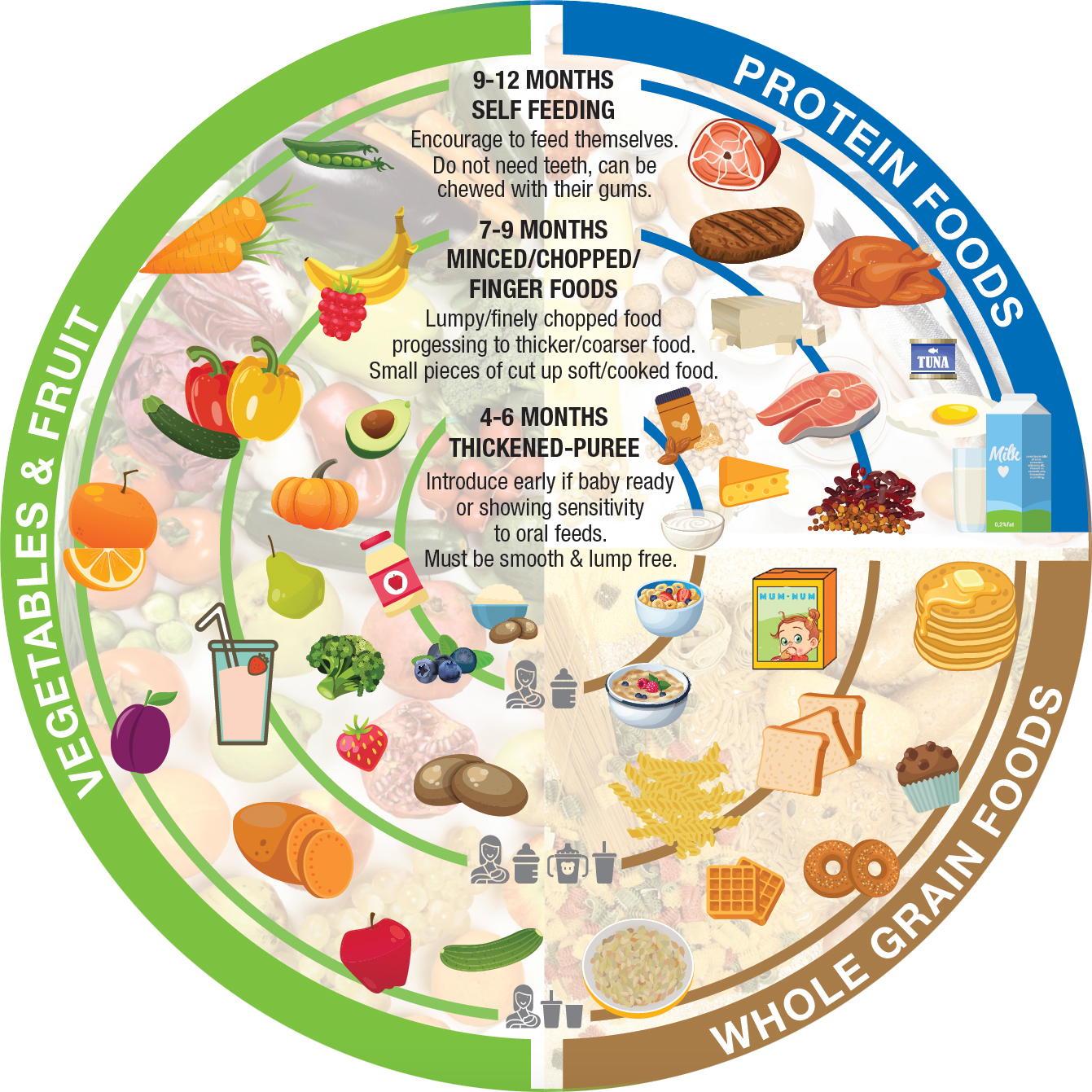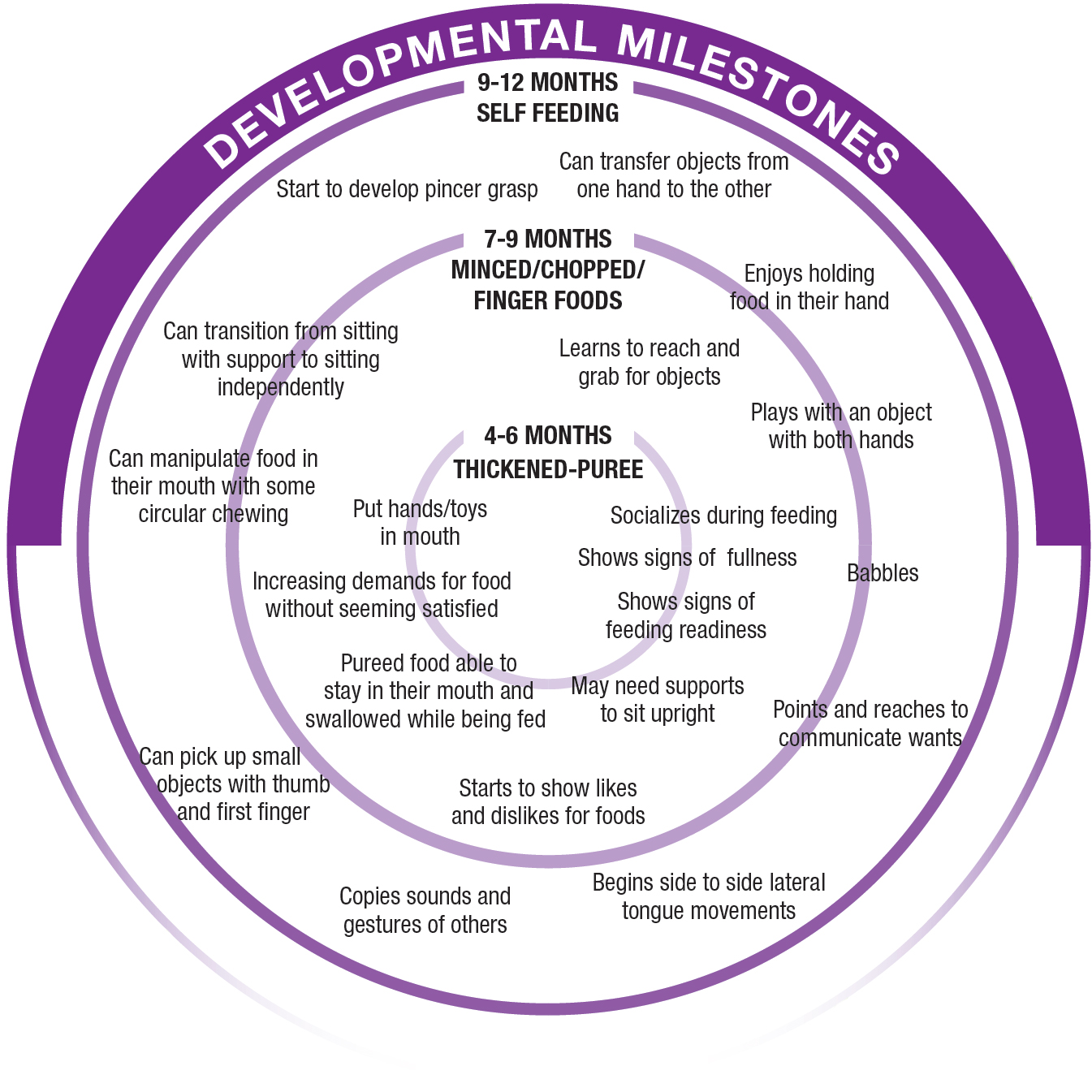View more feeding resources or download a PDF version of this resource.
Focus on texture progression, not food types. Any food will do.
- Preterm infants will progress through food textures at different rates.
- All food types can have their texture adjusted to fit into any age or developmental category.
- Attempt to prepare homemade foods to allow for easier thickening.
- In order to monitor for signs of allergy, introduce a new food every 3 days.
- Texture of food is more important than type of food.
- Start with iron rich foods.
![]() Do not mix textures.
Do not mix textures.
Avoid honey until at least 1 year of age.
Introduction of solid foods during critical points in development is crucial in preventing future feeding issues. It is important to follow your baby’s cues for signs of feeding readiness and fullness.
![]() Signs of feeding readiness: reaching, opening mouth and leaning forward
Signs of feeding readiness: reaching, opening mouth and leaning forward
Signs of fullness: closing mouth, crying turning away or leaning back
*For preterm infants, age refers to their corrected age.
View more feeding resources or download a PDF version of this resource.




